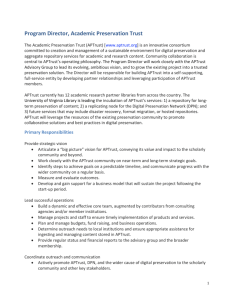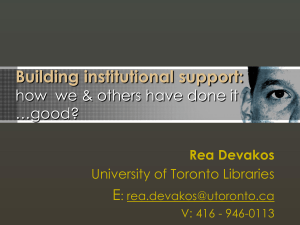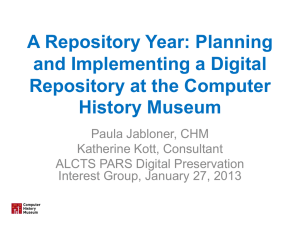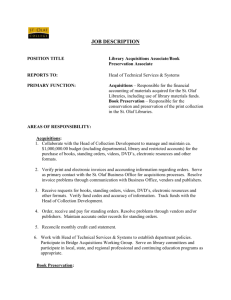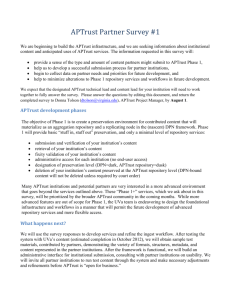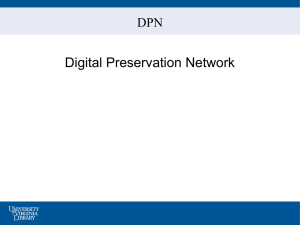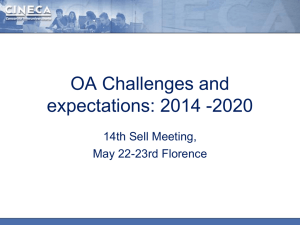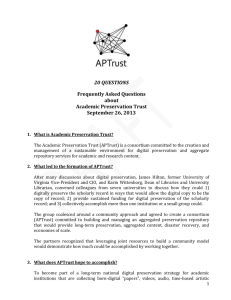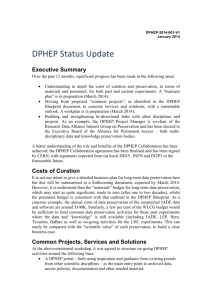APTrust elevator speech - Academic Preservation Trust
advertisement
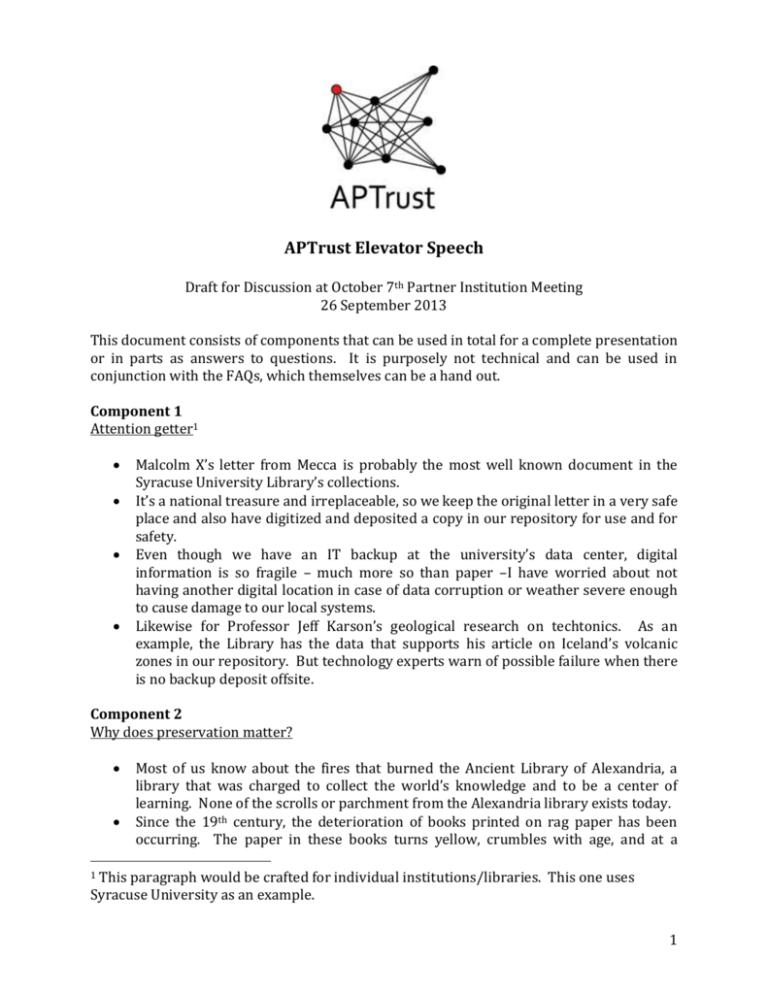
APTrust Elevator Speech Draft for Discussion at October 7th Partner Institution Meeting 26 September 2013 This document consists of components that can be used in total for a complete presentation or in parts as answers to questions. It is purposely not technical and can be used in conjunction with the FAQs, which themselves can be a hand out. Component 1 Attention getter1 Malcolm X’s letter from Mecca is probably the most well known document in the Syracuse University Library’s collections. It’s a national treasure and irreplaceable, so we keep the original letter in a very safe place and also have digitized and deposited a copy in our repository for use and for safety. Even though we have an IT backup at the university’s data center, digital information is so fragile – much more so than paper –I have worried about not having another digital location in case of data corruption or weather severe enough to cause damage to our local systems. Likewise for Professor Jeff Karson’s geological research on techtonics. As an example, the Library has the data that supports his article on Iceland’s volcanic zones in our repository. But technology experts warn of possible failure when there is no backup deposit offsite. Component 2 Why does preservation matter? Most of us know about the fires that burned the Ancient Library of Alexandria, a library that was charged to collect the world’s knowledge and to be a center of learning. None of the scrolls or parchment from the Alexandria library exists today. Since the 19th century, the deterioration of books printed on rag paper has been occurring. The paper in these books turns yellow, crumbles with age, and at a This paragraph would be crafted for individual institutions/libraries. This one uses Syracuse University as an example. 1 1 certain point, the books effectively die. Over the past 30 years, librarians have moved aggressively to ensure that the paper in these books is improved through chemical treatments or the entire book is copied on acid-free paper. But what about the recordings, video, data, and film that document the culture of the United States and the world? What about the rare books and unique manuscripts that are deteriorating or which may be stolen and then lost forever? What about the results of digital scholarship in virtually every field that other researchers depend on reading as a backbone to their own research? Losing our country’s creative and research record as documented by so many talented individuals would be a huge loss to future generations. And, any document that has been digitized is more vulnerable to loss than is the original, be it paper, film, or vinyl. Component 3 Problem statement All research universities and their libraries are concerned about preserving the rapidly growing body of digital information. The stark truth is that all of us need to comprehend that anything digital is at risk of being lost forever to future generations because we have not yet developed effective preservation mechanisms. Preserving the scholarship being produced today and the digital copies of precious print, audio, and multimedia are the greatest challenges facing research libraries and our parent institutions today. Because the challenge is not unique to any one institution, libraries and university technologists are working across institutions to find effective solutions. Component 4 A solution: `Academic Preservation Trust I want to talk with you today about Academic Preservation Trust, which is a consortium of universities dedicated to developing solutions for long-term digital preservation of academic content by creating a repository for content of all types -- and using a community based approach to develop new services. For its development phase, the APTrust consortium includes 16 member institutions from public and private universities across the country from California to New York. APTrust is building a new preservation repository in synchronization with standards being developed by the Digital Preservation Network (http://dpn.org) . APTrust is moving forward under the leadership of library deans and through the involvement of the technical and collections staff in our universities. In its development phase, APTrust is being hosted by the University of Virginia. APTrust’s staff includes one program director, a lead technologist, and two additional technologists. For the development phase, the University of Virginia is offering partial support for salaries and office space, plus staff support. Member dues ($20,000 annually) also support salaries and make it possible for staff to attend and host meetings, to present at conferences, to make site visits, and to outsource preservation services in the so-called Cloud. 2 The APTrust repository will collect all forms of content including video and audio, but each institution will determine what kinds of content it submits. Each institution will also be responsible for securing permissions for sharing or viewing the content. The APTrust repository will connect easily to local institutional repositories and offer a route to permanent or dark preservation in DPN. Our library will be able to deposit content in APTrust sometime in 2014. APTrust draws on the entire partner community to solve problems and leverage resources. This approach allows a resilient and eventually more cost-effective solution that meets the needs of researchers and their libraries Component 5 The Closer As this university and our libraries think about preservation strategies for the ever growing mountain of digital information, I believe that APTrust offers cost-effective assurance that the content individual institutions want to be protected is protected for the long term. APTrust is a solid choice for a digital preservation solution that uses an individualized institutional approach, values member governance, and is grounded in a stable yet dynamic repository. 3

